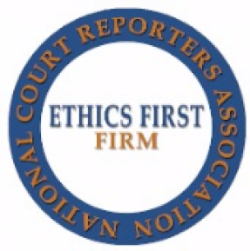Trial Presentation Assisting Attorneys Showcase Evidence with Clarity
Trial Presentation Assisting Attorneys Showcase Evidence with Clarity
Blog Article
Understanding Trial Presentation: Tips for Engaging and Persuasive Courtroom Methods
In the world of test discussion, the ability to engage and convince is paramount. The obstacle exists in flawlessly incorporating them right into a cohesive presentation. What methods can truly raise a test presentation from common to exceptional?
Understanding Your Audience
To effectively understand test discussion, it is important to understand your target market. In the court, your audience largely is composed of jurors, the judge, and opposite guidance. Each team has unique point of views, experiences, and prejudices that can affect their function of your arguments. Jurors, for example, are entrusted with translating evidence and establishing truths based upon their individual beliefs and values. Understanding their demographics, backgrounds, and prospective biases can help customize your presentation to reverberate with them effectively.

An awareness of the court's preferences and court decorum is equally essential, as it can affect the circulation of your presentation. Juries may prioritize brevity and quality, so providing your situation in a straightforward fashion can enhance your reliability. In addition, recognizing the opposite counsel's approaches can help in preparing counterarguments that successfully address their points.
Inevitably, understanding your audience enables you to engage them better, promoting connection and persuasion throughout the test (trial presentation). By leveraging understandings about their inspirations and assumptions, you can produce a compelling presentation that resonates and inevitably influences the result of the situation. This fundamental expertise is necessary for any attorney aiming to achieve success in the courtroom
Crafting a Compelling Story
A well-crafted story functions as the backbone of an effective trial discussion, guiding the audience via the complexities of the case. This story ought to be structured to engage jurors mentally and intellectually, making the realities relatable and understandable. By weaving with each other the aspects of the situation-- such as the timeline, key events, and pivotal statements-- attorneys can produce a systematic story that reverberates with jurors.
To achieve this, it is essential to identify the central styles that will certainly drive the narrative. Attorneys should focus on the motivations and objectives of the events included, illustrating the human aspects of the instance (trial presentation). This approach not only maintains juror passion however likewise promotes compassion, leading them to connect personally with the narrative
Each section of the story need to develop towards an engaging climax, finishing in an influential verdict that reinforces the situation's core message. Ultimately, a strong narrative not only makes clear the issues at hand but additionally produces a lasting impression that can influence the outcome of the trial.
Making Use Of Visual Aids Successfully
How can aesthetic help enhance the performance of a trial presentation? Visual aids work as effective devices that can substantially boost juror understanding and retention of intricate info - trial presentation. When used thoughtfully, they can clarify bottom lines, show relationships, and highlight critical evidence that sustains the case story
Effective visual help consist of graphes, graphs, timelines, and images, which can simplify detailed information and give context. For example, a timeline can succinctly share the series of occasions, while a chart can highlight statistical details in an aesthetically interesting manner. The critical usage of multimedia presentations can likewise enhance involvement and maintain juror rate of interest throughout the trial.
Additionally, visual aids can aid to stimulate emotional reactions, reinforcing the human components of a case. By presenting pictures or video clips relevant to the instance, attorneys can create a more compelling and relatable story. It is crucial to ensure that visual help are expertly made and not excessively complicated, as this can lead to complication instead than clearness.
Engaging Body Movement Techniques
Aesthetic help are not the only tools that can boost the effectiveness of a test presentation; engaging body language methods additionally play an important role in catching juror focus and communicating confidence. A presenter's nonverbal cues can considerably influence jurors' perceptions and responses, making it vital to master these techniques.

Furthermore, varying your singing tone and pace can boost your narration, making it extra compelling. Stopping briefly purposefully permits jurors my sources to soak up important information and signals the relevance of what you are stating. Lastly, relocating actively within the court room can assist reinforce your factors, provided it does not distract from your message.
Integrating these body language techniques will not just enhance your court room presence however likewise promote an even more convincing connection with jurors, eventually adding to the success of your test discussion.
Practicing for Influence
Effective test presentations hinge not just on the material however likewise on the distribution, making method crucial for influence. The significance of wedding rehearsal can not be overstated; it permits lawyers to refine their disagreements and establish a powerful visibility in the courtroom. Participating in deliberate practice helps lawyers to identify their strengths and weaknesses, allowing them to readjust their pacing, tone, and body language accordingly.
To exercise for impact, mimic test conditions as closely as possible. This consists of making use of aesthetic aids, exercising in front of associates, and obtaining constructive responses.

Conclusion
Grasping trial discussion entails a complex strategy that combines audience understanding, narrative advancement, aesthetic aids, and body movement. These aspects work synergistically to develop a persuasive courtroom experience. By properly involving jurors with clear narration and impactful visuals, and by using confident body these details language, test advocates can substantially enhance their disagreements. Extensive technique in substitute setups even more strengthens these approaches, making certain that each presentation reverberates and leaves a lasting perception on the court.
Report this page